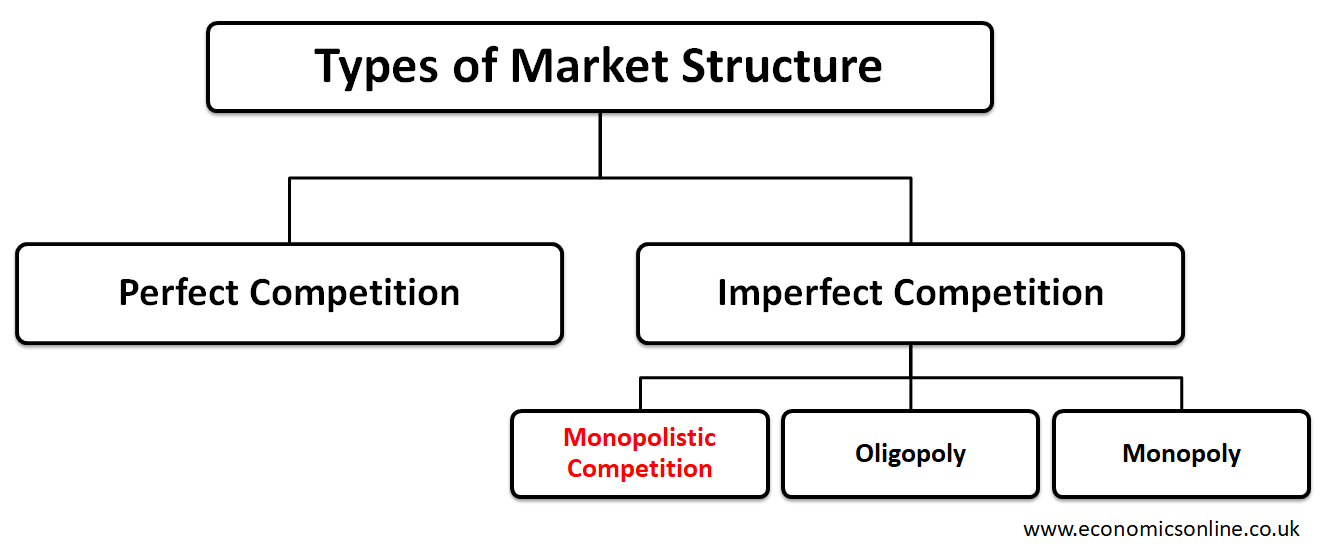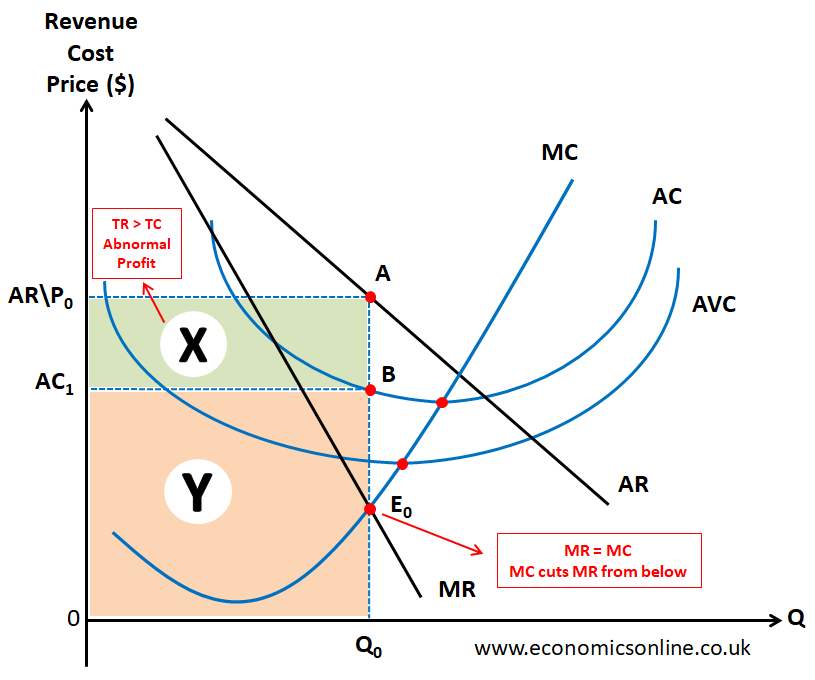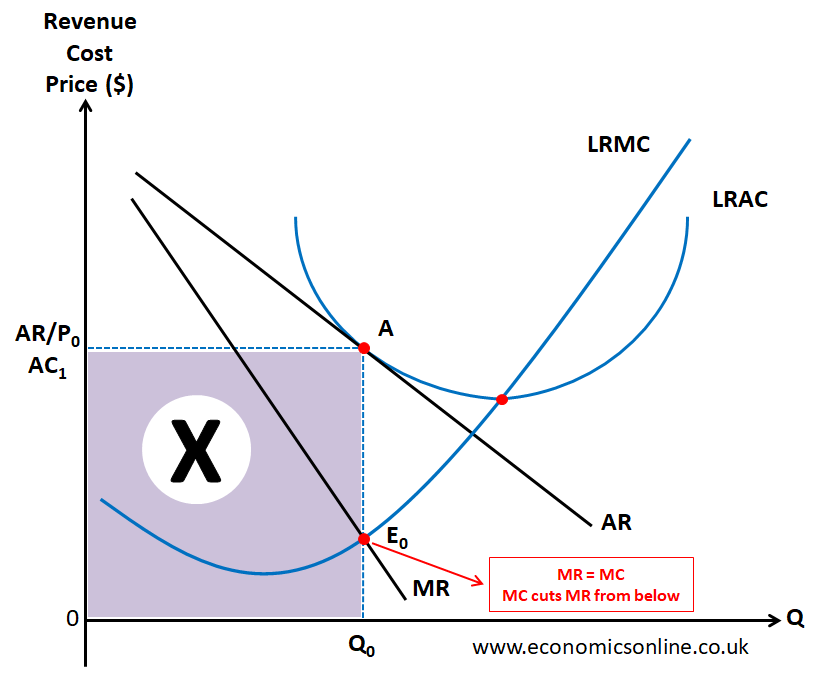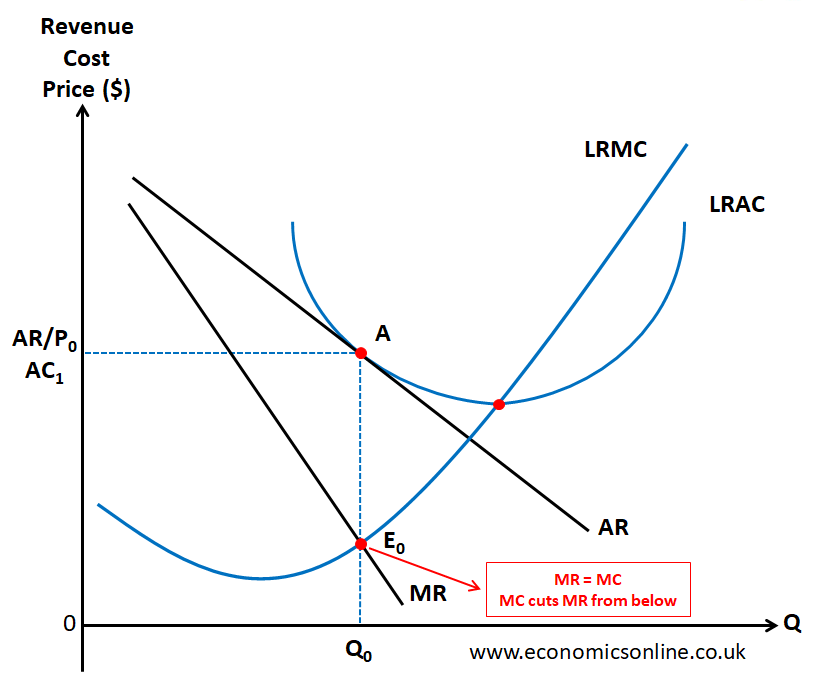
An image of arm wrestling as an analogy of competition.
Monopolistic Competition
What is Monopolistic Competition?
Monopolistic competition is a market structure that combines the features of both perfect competition and monopoly. In monopolistic competition, many firms operate that offer differentiated products that are close substitutes. This distinguishes it from perfect competition, where products are identical, and monopoly, where a single firm dominates the market.
Monopolistic competition has the characteristics of monopoly in the sense that firms have some market power due to differentiated products because they can increase the price without losing all their customers. Monopolistic competition has the features of perfectly competitive market because the entry barriers are low and firms can easily enter the market. This explains the existence of many firms in monopolistic competition.
Basic Terms
To understand monopolistic competition in a better way, let's first look at some basic terms.
Market Structure
Market structure refers to the features of a market that determine the behaviour of firms in that market. Some of these features include the number of firms, the size of firms, the market share of firms, market power, market knowledge, types of products, entry barriers, and exit barriers.
Market structure determines the behaviour of firms, which means the way they set prices and quantity. So, the behaviour of firms depends on the market structure in which they operate. Firms operating in the same market structure behave in the same way, while firms operating in different market structures behave differently.
Types of Market Structure
According to traditional theory, the types of market structure are given below.

Market Power
Market power refers to the ability of a firm to influence the price in the market. Market power depends on the market structure. For example, in perfect competition, firms cannot influence the market price; hence, they have no market power. These firms are called price takers.
In imperfect competition, firms can influence the market price; hence, they have market power. These firms are called price makers.
Entry Barriers
The hurdles faced by new firms when they try to enter the market are called entry barriers.
Exit Barriers
The hurdles faced by existing firms when they try to leave the market are called exit barriers.
Characteristics of Monopolistic Competition
Many Firms
In monopolistic competition, there are many firms that coexist within a market. This abundance of competitors ensures that no single firm has significant control over the industry.
Low Entry and Exit Barriers
There is freedom to enter or leave the market, as there are low barriers to entry and exit. The absence of significant barriers encourages the entry of other firms in the market, fostering competition and diversity.
Differentiated Products
The key feature of monopolistic competition is product differentiation. Each firm seeks to create a unique identity for its products through brand name, packaging, quality, or other intangible aspects. This product differentiation enables firms to establish a degree of market power and influence over pricing.
Price Elastic Demand Curve
In monopolistic competition, firms have a price elastic demand curve. It is because of the availability of many close substitutes. This is also called the perceived downward sloping demand curve or perceived demand curve.
Short Run Equilibrium
In monopolistic competition, firms can earn abnormal profit or supernormal profit in the short run. This is illustrated by the following graph:

In the above diagram, we assume that firms aim to maximise profit. The slope of the marginal revenue curve is double than that of the average revenue curve. Average total cost curve (AC curve) is also drawn along with AVC curve.
By using the profit maximisation rule (1. MR=MC, 2. MC curve cuts MR curve from below), the equilibrium point is E0 and the equilibrium or profit-maximizing quantity is Q0.
At output Q0,
Total Revenue (TR) = Shaded areas X + Y
Total Cost (TC) = Shaded area Y
Total Profit = TR - TC = X + Y – Y = X > 0
So, the shaded area X shows the abnormal profit (positive economic profit) in the short run.
Long Run Equilibrium
In monopolistic competition, firms earn a normal profit in the long run. This is illustrated by the following graph:

In the above diagram, the equilibrium point is E0 and the equilibrium, or profit maximisation output is Q0.
At output Q0,
Total Revenue (TR) = Shaded area X
Total Cost (TC) = Shaded area X
Total Profit = TR - TC = X – X = 0
So, there is zero economic profit (normal profit) in the long run.
If firms in monopolistic competition earn abnormal profits in the short run, new firms will be attracted into the market. Due to low entry barriers, many new firms can enter into the market.
With the entry of new firms, the existing market is divided among more sellers. Hence each firm will sell less quantities of the product than before. As a result, the demand Curve faced by individual firms shifts downwards left. This will eliminate the abnormal profit and hence firms can only earn normal profit in the long run.
Efficiency Analysis in the Long Run
A firm is said to have economic efficiency if the following two conditions are met.
1. Productive Efficiency
For a firm, productive efficiency means producing output at the lowest point of the lowest average cost (AC) curve, i.e., minimum AC, where MC = AC.
2. Allocative Efficiency
For a firm, allocative efficiency means producing output for which the price is equal to marginal cost (P=MC).
In LR, the above two conditions are not satisfied for firms in monopolistic competition.

In the above diagram of long run equilibrium, at Q0,
MC = Q0E0 and AC = Q0B.
Here, MC ≠ AC, so AC is not minimum. Hence, firms are not productively efficient.
Also at Q0, P = Q0A and MC = Q0E0
Here P ≠ MC, so, firms are not allocatively efficient.
Hence firms don’t have economic efficiency in monopolistic competition in the long-run.
Examples of Monopolistic Competition
Some of the real life examples of monopolistic competition are given below.
Restaurants
Restaurants offer a good example of monopolistic competition. In most markets, there are many restaurants that compete on the basis of price and quality of food. Product differentiation is a key feature in the restaurant business. Moreover, there are low entry barriers in setting up a new restaurant.
Grocery Stores
Grocery stores market offer another prime example of monopolistic competitive market. In a particular market, there are normally many grocery stores that sell similar and slightly differentiated goods.
Hairdressers
Hairdressers also give a decent example of monopolistic competition. There are many hairdressers in a single market that compete on the basis of price and the quality of their services. There are also low entry barriers in starting a hairdressing business.
Advantages of Monopolistic Competition
Higher Quality
Due to low entry barriers in monopolistic competition, it is easy for firms to enter this type of market. More rivals generate higher competition, which leads to better-quality products for customers.
Variety and Choice
Monopolistic competition offers a wide range of products, allowing consumers to enjoy greater variety and choice. The product differentiation aspect ensures that consumers can select products tailored to their preferences and needs.
Innovation
In monopolistic competition, every monopolistically competitive firm tries to differentiate its products. To capture consumer attention, firms invest in product development, quality enhancement, and branding efforts. This constant pursuit of innovation and improvement benefits consumers through better products and enhanced features.
Disadvantages of Monopolistic Competition
Advertising and Marketing Expenses
In monopolistic competition, firms allocate substantial budgets to advertising and marketing to establish product differentiation. These expenses can be a burden, particularly for small and new entrants, potentially limiting their ability to compete effectively.
Non-Price Competition
Monopolistic competition relies heavily on non-price competition, such as product differentiation and marketing, to gain a competitive advantage. This dynamism requires firms to continually invest in research and development, advertising, and customer relationship management to maintain and expand their market share.
Economies of Scale and Efficiency
The existence of many firms in monopolistic competition may limit economies of scale benefits. Operating at smaller scales can cause inefficiency, as firms may not benefit from large-scale production.
Conclusion
Monopolistic competition exists when many firms offer products that are similar but not identical. Through product differentiation and branding, firms strive to capture consumer-attention and offer them a greater choice. Consumers benefit from the range of products and on-going innovation resulting from tough competition. However, firms face some challenges, such as high advertising costs and the need for continuous non-price competition. Hairdressers and restaurants offer good real life examples of monopolistic competition.


